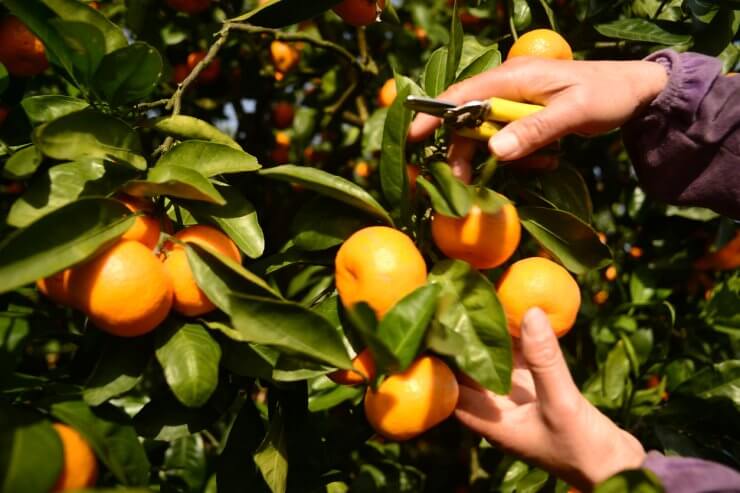
Gardener harvesting oranges
You’ve watered. You’ve weeded. You’ve cut off suckers. You’ve watched, week after week, month after month, for a sign that your oranges are ripe for the picking. How will you know?
Well, here’s the thing. As oranges grow and the season progresses, most oranges will go from green to orange. Does that mean they’re ripe? Not necessarily. As soon as the weather starts getting cooler, oranges will begin to shift from green to orange. But, wait! the sweetness of the orange is determined by heat. So, the more heat there is in the fall, the more quickly the acids in the orange will decrease as the sugars increase. It’s possible to have oranges with a greenish skin that you think aren’t ripe, but they are. Time and temperature determine just when. Your best way to tell if your oranges are ripe? Try one.
Now, each orange cultivar will have a slightly different time range for ripening. Where you’re growing your orange tree will be a factor as well. Consult with your local nursery or extension center for advice on when to start testing your crop.
Keep in mind that, unlike other fruits, oranges do not continue to ripen once you pick them from the tree. So don’t overharvest. Check one fruit and see where you are in the process. The fruit should feel firm and heavy—a sign that there’s a juicy treat waiting just inside the peel!
When you do start harvesting, it’s best to use garden shears to cut the stem from the tree. That way you avoid the risk of damaging the fruit.
The longer your oranges stay on the tree, the sweeter they will be. So, if some of your oranges are ready to pick, go ahead and pick them and leave some on the tree for later. If you’re not in a frost-prone area, the best place to keep fresh oranges is on the tree.
Store freshly picked oranges in the fridge, in the crisper drawer. They’ll stay fresh and flavorful for about a week.


 Previous
Previous

